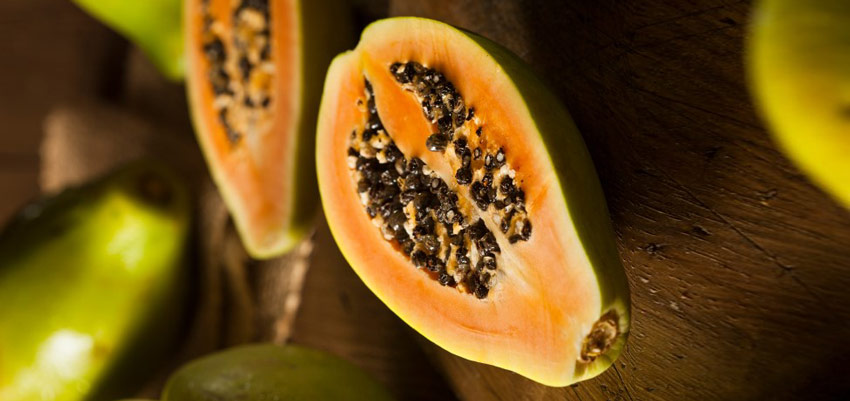Last month, the EU Rapid Alert System for Food and Feed (RASFF) issued a warning about genetically modified papaya. We may have been the laboratory that discovered this unauthorised admixture in a bag of fresh papaya cubes.
A few weeks ago, we received a sample of papaya fruit preparation of unknown origin for analysis. The order included testing for genetically modified papaya. Our sensitive PCR screening system clearly showed that this fruit preparation must contain genetically modified papaya. Further internal investigations revealed that the mixture contained the GMO papaya variety ‘16-0-1’ developed in Taiwan. Official investigations over the past decades have shown that papaya is genetically modified.
At the Frankfurt am Main hub in particular, shipments containing GMO papaya are repeatedly discovered and rejected, as the import of GMO papaya into the EU is prohibited.
Papayas are actually berries that grow on tall, tree-like plants. They originate from Central America and thrive in tropical climates. Today, papayas are grown in Asia, Africa and America. Papaya plants are susceptible to various pests, including whiteflies, various worms, locusts, leafhoppers and scale insects. Insects can also transmit diseases. One of the greatest threats to cultivation is the papaya ringspot virus (PRV), which is spread by aphids as they migrate from one plant to another. A papaya plant infected with PRV develops discoloured and mottled leaves and suffers from stunted growth. Young plants can die quickly, while older plants produce small quantities of poor-quality fruit with characteristic ‘ring spot’ markings. PRV is a global problem for papaya plantations.
Papaya was first introduced to the Hawaiian Islands around 1800. Commercial cultivation began in the following century. In the 1950s, papaya disease was discovered in commercial plantations on Oahu, an island in the Hawaiian archipelago. Papaya production was moved to another island to escape the pathogen, but this strategy was not successful. By the mid-2000s, Hawaiian papaya production had declined by more than 50% due to PRV. Researchers at the University of Hawaii sought a solution to protect the papaya industry and turned to biotechnology. They inserted viral genes into papaya to make it resistant to PRV, similar to a vaccine. PRV-resistant GM papayas are available in the United States as red-fleshed SunUp and yellow-fleshed Rainbow varieties. After approval by the US authorities in 1996, GMO papayas were quickly adopted by commercial producers. However, the import of GMO papayas was and remains banned in the EU.
In recent years, new GMO papaya varieties have been developed because the virus has mutated and the introduced resistances have proven ineffective, especially in Asian regions. In 2006, for example, the papaya Huanong No. 1 was approved for cultivation in China, and the GM papayas 16-0-1 and 18-2-4 were developed in Taiwan.
This was our first encounter with 16-0-1. The result was immediately communicated to the customer. In this case, the laboratory is not (yet) subject to any special reporting requirements. However, the distributor is obliged to report the result to the competent authorities itself. This is likely to have led to the European warning mentioned at the beginning.
YOUR PLUS: This example demonstrates the capabilities of our molecular biology laboratory in Kiel. A highly competent team delivers reliable results every day. This case also underlines the relevance of the monthly summary of RASFF alerts in AGROLAB RADAR. A relevant report can be an important signal for temporarily increased self-monitoring of critical raw material sources.
Authors: Anja Palisch, AGROLAB LUFA; Dr. Frank Mörsberger AGROLAB GROUP

 Contact
Contact

 Contact
Contact Career
Career